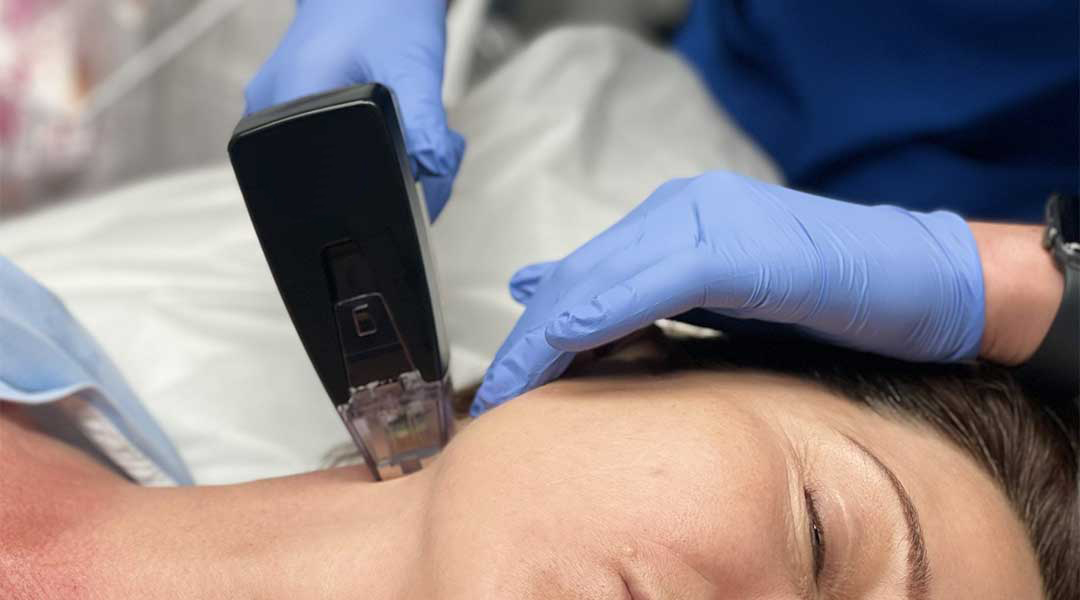Regardless of how old you are, you always want your skin to look it’s best and have a healthy glow. Having smooth and blemish free skin is something that gives many confidence in themselves, but through the normal process of ageing the skin ends up wrinkling and sagging which ends up with skin that looks less than vibrant.
In an effort to improve the appearance of damaged or ageing skin, a lot of people look into the world of non-surgical treatments to help fight the visible signs. Things like microneedling have been proven to be a wonderful solution to rejuvenate the appearance of the skin, but now there is a more modern version that utilizes radiofrequency alongside the traditional microneedling treatment and is known as dermaplus.
What is the dermaplus treatment?
Dermaplus is a specialized treatment that combines the benefits of both microneedling and radiofrequency treatments into one super facial treatment. In a traditional microneedling treatment, a small handheld roller or device is used to create microscopic wounds in the skin to trigger the renewed production of collagen deep within. While the basic principle is similar with dermaplus, the handheld devices stamps the tiny wounds into the skin which causes the body to react with its natural healing methods.
This part of the treatment is directly followed by the radiofrequency aspect which targets the deeper layers of the skin that the microneedling won’t touch. By targeting the treated area with thermal radiofrequency waves as well as just microneedling, the dermaplus treatment is capable of breaking down and remodeling the fat beneath the skin. The radiofrequency waves break down and separate the fat cells into a number of distinct groups (mainly water, fatty acids and glycerol) and these are flushed out of the body via the lymphatic system, which when combined with microneedling results in smoother and younger looking skin.
Does it have any side effects?
As with all cosmetic procedures, there is always a negative to go along with any positive provided by it (even if they are only minor). Thankfully, the most common that are associated with dermaplus are just a bit of swelling and redness in the treated area (which is about as minor as it gets), and this will subside by itself over the next few days. It’s also possible that due to the needles being used to puncture the skin, you may notice scabbing on the treated area. It’s really important to note that if you do notice any scabbing to avoid picking at the scabs as this can lead to scarring and affect the end results.
There are some other side effects which can include bruising, tenderness and a small amount of pain and soreness in the area that was treated, but these are all able to be managed with over the counter medication if necessary.

Who is the dermaplus treatment for?
Well, it’s pretty much for anyone who is looking to improve the condition and appearance of their skin. Regardless of your age or gender, dermaplus is a treatment that can be performed to stimulate the production of collagen beneath the skin, but as your skin is different from every other patients, your results will be individual to you.
The reasons that we see most commonly from our patients for undergoing a dermaplus treatment are;
- Looking to hide or mask the appearance of scarring
- Making improvements to the general texture of the skin
- Getting rid of any acne related scarring
- Reducing any sagging on the face or jowls
- Removing fine lines and wrinkles around the eyes and mouth
- Reducing the visible signs of sun damage to the skin
There are some things that may rule you out of treatment, but these will all be discussed during your consultation prior to undergoing a dermaplus treatment session. This will allow the aesthetician to get a clear basis on your skin and goals from the treatment.
What happens after a dermaplus treatment?
Well, as it’s considered to be a non-surgical and minimally invasive, the dermaplus treatment has a very short period of downtime associated with it. For the first few days, it’s completely normal to experience redness and swelling on the skin, but this will naturally ease.
For at least the first week, it’s important to avoid strong sunlight wherever it is possible and if you do need to go outside, then you will need to wear a high factor SPF as the skin will be more sensitive to UV rays from the sun.
The dermaplus results will start to show within a few days of undergoing treatment and these will continue to improve over the coming weeks and months, thanks to the production of collagen beneath the skin. Unfortunately though, as we all know, collagen production slows down as we age and eventually the results will need to either be topped up with a follow up treatment or will start to fade away. This is something that will be discussed during a consultation prior to undergoing a dermaplus treatment, and any follow ups that are necessary will be recommended early on.
So now you have the basic information about what the dermaplus treatment is, how it works and the different things it can be used to treat, you have a lot more information to use as a basis for making the decision on whether or not it is the right treatment for you. To find out more about the treatment, visit our dedicated dermaplus page, or you can contact a member of our team to book your completely free, no-obligation consultation today using our live chat system, consultation form or by calling us on 0800 772 0039.

